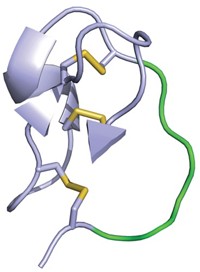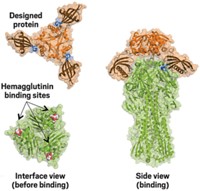Advertisement
Grab your lab coat. Let's get started
Welcome!
Welcome!
Create an account below to get 6 C&EN articles per month, receive newsletters and more - all free.
It seems this is your first time logging in online. Please enter the following information to continue.
As an ACS member you automatically get access to this site. All we need is few more details to create your reading experience.
Not you? Sign in with a different account.
Not you? Sign in with a different account.
ERROR 1
ERROR 1
ERROR 2
ERROR 2
ERROR 2
ERROR 2
ERROR 2
Password and Confirm password must match.
If you have an ACS member number, please enter it here so we can link this account to your membership. (optional)
ERROR 2
ACS values your privacy. By submitting your information, you are gaining access to C&EN and subscribing to our weekly newsletter. We use the information you provide to make your reading experience better, and we will never sell your data to third party members.
Biological Chemistry
Technique Sifts Through Possible Leads For HIV Vaccines
Adaptation of mRNA display selects glycopeptides that tightly bind an HIV-neutralizing antibody
by Carmen Drahl
March 31, 2014
| A version of this story appeared in
Volume 92, Issue 13
Researchers know of roughly two dozen antibodies capable of neutralizing a broad range of HIV strains. People with HIV rarely make them quickly enough to contain infection, so the search continues for a vaccine that goads immune systems into production mode. Several neutralizing antibodies bind to sugars on the virus, so some experts think that a glycopeptide vaccine that mimics HIV’s sugar-coated surface might work. It has proven challenging, however, to cluster carbohydrates in the right spatial arrangement. To rapidly sift through glycopeptide possibilities, Satoru Horiya, Isaac J. Krauss, and colleagues at Brandeis University collaborated with Yollete V. Guillen Schlippe at Massachusetts General Hospital. They adapted mRNA display, a technique that attaches RNA bar codes to library peptides, to select tight binders to HIV antibody 2G12. They encoded copies of an unnatural amino acid as attachment points for sugars and attached them with click chemistry. They found glycopeptides that bind 2G12 with low nanomolar affinity—comparable to the strength of the HIV-2G12 interaction (J. Am. Chem. Soc. 2014, DOI: 10.1021/ja500678v). Now they plan to see whether their glycopeptides elicit an immune response in animals. Krauss has filed a patent on the technology.






Join the conversation
Contact the reporter
Submit a Letter to the Editor for publication
Engage with us on Twitter